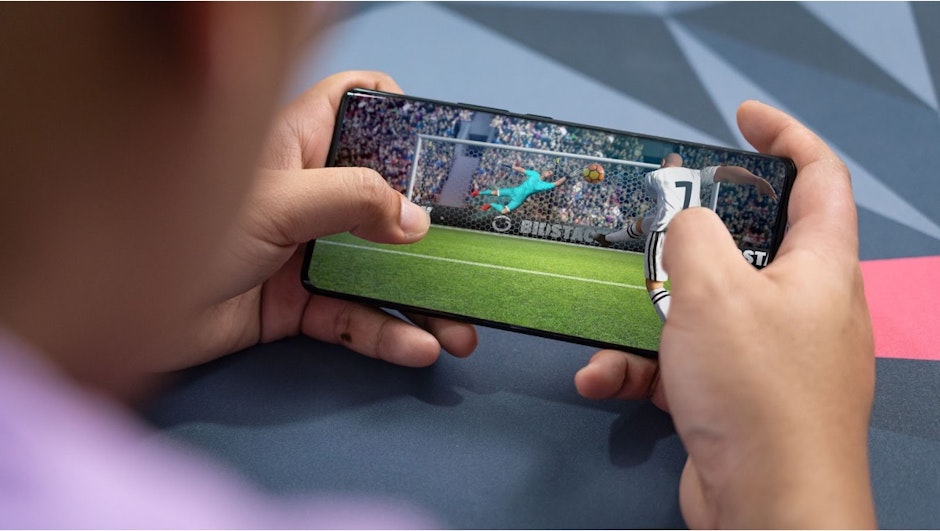Why advertiser attention is turning to gaming
As Frank Sinatra crooned in the 1955 smash hit Love and Marriage, “You can't have one without the other” - and the same could be said for viewability and attention

The subsequent 70-odd years may have shown that, actually, you can have love without marriage, but I won’t let that derail my intro. Because you absolutely cannot measure attention without first establishing viewability, and you shouldn't leave viewability standing forlornly alone at the altar of advertising measurement either.
While many global economies flirt with macroeconomic recession, it’s clear the advertising industry has fallen head over heels into an ‘attention recession’ - a term coined to describe declining levels of content consumption by consumers post pandemic. In this context, simply pulling the purse strings tighter is seen by some as a pragmatic (if short-sighted) way to weather a storm, but savvy marketers are instead reevaluating their approach to media spend across all channels.
With the average person now exposed to up to a reported 4,000 ads per day, the importance of ousting spending inefficiencies and maximizing ROI with high-impact and high-attention ad campaigns has never been higher. The upshot of this skirmish for eyeballs is a growing recognition that exclusively utilizing metrics such as viewability - the simple confirmation that a piece of branded content could have been seen - is no longer enough. Instead, the power of the ad placement itself to deliver measurable business outcomes needs to be evaluated, and attention remains firmly at the forefront of this conversation.
Gaming: an environment built for attention
Even in these turbulent times, gaming is thriving as an entertainment and media channel, reaching a global audience of more than 3 billion players across an ever-evolving suite of platforms and devices.
With audiences now spending an average of 15 hours per week playing video games, the format offers unmatched levels of audience attention - with gameplay demanding highly focused interactions. This shift in audience engagement reflects how media consumption itself has changed. Until recently, audiences primarily engaged with content such as TV during ‘peak hours’ and in a linear fashion, while today, gaming content, podcasts and on-demand series allow content to be consumed across several smaller sessions throughout the day - fitting in around our daily lives.
The continued growth of mobile gaming has also accelerated a new trend, where 85% of US adults have indicated that they consume gaming experiences on second-screen devices whilst passively engaging with other forms of entertainment, such as television. This fragmentation of audience attention away from traditional formats highlights the importance of brands understanding how to utilise gaming to engage and capture active attention amongst the most difficult-to-reach audiences.
This sparks an uncomfortable discussion around the true brand value of impressions generated through formats that experience passive or non-attentive consumption. For example, the assumption that interval-driven formats such as television maintain audience interest throughout branded segments has been called into question by research that indicates that up to 29% of television impressions are delivered to empty rooms, with 52% of consumers being likely to change channels or divert attention to another device during ad slots.
Measuring attention in games
New technologies, such as the methods utilized by attention specialists Lumen Research, have helped to provide a credible scientific and independent method of measuring audience attention throughout in-game campaigns.
Rather than exclusively measuring impressions, their approach can help brands to recognize the optimum placements for achieving cumulative viewability, where audiences spend extended periods of time engaging with branded content. Within the context of gameplay, where audience attention is continuously active, this can be important as ad placements can remain prominent for longer periods of time - delivering value from continued engagement rather than the initial impression alone.
This, combined with existing anonymized gameplay data, can be utilized to understand audiences better, assisting advertisers in refining their creatives and placements throughout a campaign and protecting audiences from over-exposure to repetitive messaging.
The race for attention
Unlike traditional ad placements, gaming formats provide a unique opportunity for brands to engage with a diverse, global audience in environments that generate significant levels of attention. Intrinsic In-Game advertising, in particular, complements gameplay by utilizing otherwise vacant virtual spaces such as billboards, stadium hoardings, or vehicle liveries to deliver contextually relevant content that allows brands to become an authentic part of the gaming experience.
The clamour from global agencies such as Group M, Publicis, Omnicom, and, in particular, Dentsu to establish themselves as the leaders of the new ‘Attention Economy’ has seen attention become widely adopted as a key campaign success metric. With newly implemented Intrinsic In-Game measurement standards introduced by the IAB and MRC, and the inevitable accreditation of purpose-built solutions that measure audience attention within 3D environments, confidence in gaming as an effective and brand-safe ad channel is at an all-time high.
So, as going through the motions with familiar channels and metrics becomes increasingly unfulfilling, many brands are casting envious glances at the perfect marriage of viewability and attention - and nowhere is this flourishing more so than in gaming environments.

